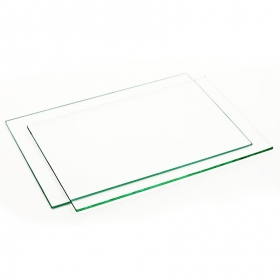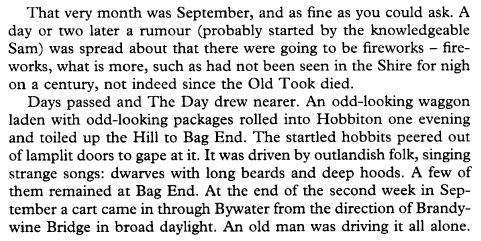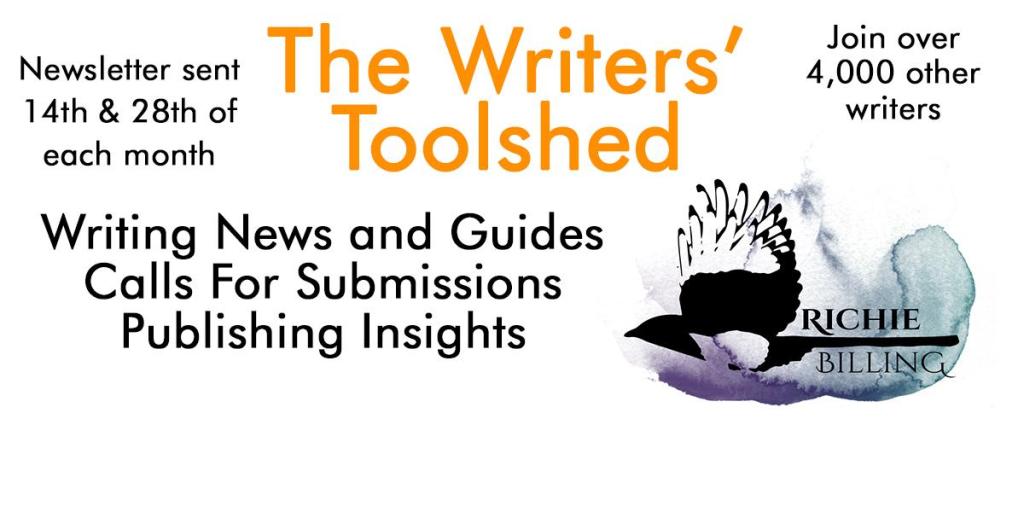As a creative writing teacher, a common question I get asked is “what is prose?” The term prose simply refers to spoken or written language. In the context of writing books, it describes a style of written words, distinct from poetry, numbers and metrics.
One of the biggest tasks many writers face is improving their ability to write prose. This guide offers the quickest and easiest solutions.
Below, we take a look at the different styles of writing prose, examples of each one, and advice from expert writers on getting better.
You can jump to the section you’re most interested in below:
Choose A Chapter
- What Is Prose Writing? An Easy Definition
- What Are The Main Styles Of Prose?
- Orwellian Prose: The Clear Pane Of Glass
- Florid Prose: The Stained Glass Window
- Can You Use A Hybrid Approach?
- Examples Of Different Styles Of Prose
- 13 Tips To Help You Write Clear Prose
- Learn More About Writing Prose
- Frequently Asked Questions (FAQ)
- Join An Online Writing Community
What Is Prose Writing? An Easy Definition
So what is prose?
It’s spoken or written language that does not rhyme or contain numbers. How we think, speak and write would be described as prose. When we write prose, we often apply a grammatical structure.
How Are Prose And Poetry Different?
Prose and poetry are different because poetry applies a rhythmic structure whereas prose follows a more standard mode of written language that follows natural speech patterns—an example being this very article you’re reading now.
Prose and poetry are therefore considered opposites.
What Is Purple Prose In Writing?
Purple prose is when a writer uses too many fancy words or describes things in a flowery, exaggerated way. It’s like adding too much frosting on a cupcake; it might look pretty, but it’s too much and can make it hard to enjoy.
What Are The Main Styles Of Prose?
There are a few main styles of writing prose. They are:
- Clear, concise prose, referred to as ‘Orwellian’, or the ‘clear pane of glass’, and;
- Florid, literary prose, referred to as the ‘stained glass window’.
- A hybrid of the two, which is an approach I favour.
First, we’ll have a look at each, before looking at some examples.
Orwellian Prose: The Clear Pane Of Glass

If you’ve ever heard the phrase “good prose is like a window pane” and wanted to know the meaning behind it, here it is.
George Orwell in his essay, Politics and the English Language, set out what he thinks good prose writing ought to consist of, all the while attacking the British political system for the destruction of good writing practices.
Orwell was very much against the over-complication of language, which at the time (1946), was the direction politics was taking, and unfortunately still takes today.
Orwell believed prose should be like looking through a clear pane of glass at the story unfolding on the other side. It should be clear to understand. The writing should be invisible, drawing as little attention to itself as possible. The reader shouldn’t have to stop to re-read a sentence due to poor construction or stumble over a word used in the wrong way.
Words should be chosen because of their meaning, and to make them clearer, images or idioms, such as metaphors and similes, should be conjured. He encouraged the use of ‘newly invented metaphors’ which “assists thought by evoking a visual image”. Orwell encouraged writers to use the fewest and shortest words that will express the meaning you want.
“Let the meaning choose the word.”
If you can’t explain something in short, simple terms, you don’t understand it, was his argument.
A change in the language used by politicians provoked Orwell to write his essay. Pretentious diction, as he called it—words such as phenomenon, element, objective, eliminate and liquidate—is used to dress up simple statements. He blamed politics for this, and how politicians adopt hollow words and phrases, mechanically repeating them over and over until they become meaningless.
I’m sure we can all agree we’re fed up of hearing such phrases. Orwell used ‘stand shoulder to shoulder’ as an example, and more recently we’ve seen Theresa May butcher the phrase ‘strong and stable’. These phrases are vague and bland and do not evoke any imagery, and if you’re a writer, they’re things you ought to avoid, Orwell argued.
Orwell’s Six Rules For Achieving Clear Prose
Orwell provided six rules to remember when writing prose. In following them, he argued, you could achieve clear prose that could be understood and enjoyed by all readers:
- Never use a metaphor, simile or other figure of speech which you are used to seeing in print;
- Never use a long word where a short one will do;
- If it is possible to cut out a word, always cut it out;
- Never use the passive [voice] where you can use the active;
- Never use a foreign phrase, a scientific word, or jargon word if you can think of an everyday English equivalent;
- Break any of these rules sooner than say anything outright barbarous.
So in summary, Orwellian prose is writing which is short, simple and understandable. And if you’re looking for a simple and effective method of how to write good prose, this is it.
They’re great guidelines to test out with short stories. With that type of narrative writing you need to make every word count, so they’re a great way to get used to them. It’s also a more preferred prose form among many literary agents, publishers, and editors.
A Video Explainer On Orwellian Prose
If you’d like a more visual explainer on writing Orwellian prose, check out this brilliant video from bestselling author, Brandon Sanderson.
Florid Prose: The Stained Glass Window
When we explore answers to the question, what is prose writing, one approach we inevitably turn to is the stained glass window—the antithesis to Orwell’s clear pane method.
With a stained glass window approach, you can still see the story on the other side, but the stained glass is colouring it in interesting ways. Language and structure are therefore florid and more creative. And it also tends to lean more heavily on the side of descriptive writing.
It’s used more in literary fiction and requires a mastery of language to pull off well. Brandon Sanderson refers to it as the artist’s style of prose, whereas Orwellian prose he regards as the craftsman’s style.
Above we mentioned the phrase ‘purple prose’. This is an attempt at creating a stained glass window, but the description and structure are poor, rendering the prose incomprehensible.

Can You Use A Hybrid Approach?
A blend of the clear pane and stained pane can work well. JRR Tolkien often adopted this, particularly with his descriptions, and other writers, Sanderson and David Gemmell to name but two, like to start chapters in a florid way before transitioning into the clear pane. Sometimes it can depend on the scene.
In fight scenes, for example, simple language is best adopted so the reader’s flow isn’t disrupted. When describing places, people or settings colourful language works well to liven up what would otherwise be quite mundane passages.
My personal preference is toward Orwellian prose writing. Writing should be clear and accessible to all. As writers, that’s what we want—to have our stories read and enjoyed by as many people as possible.
Having spent years working as a lawyer I know it’s not the case, and Orwell’s fears back in 1946 continue to materialise. In the end, I regarded my role as a lawyer as more of a translator of legal jargon. Writing shouldn’t be this way.
Examples Of Different Styles Of Prose
So we’ve taken a look at the different styles of prose writing. Now let’s take a look at some examples to better illustrate the different approaches.
Examples Of A Clear Prose Style
One of my favourite writers of clear prose is Ernest Hemingway. His stories are immersive and gripping because they’re simple to follow. A clear pane of glass approach if ever there was one.
Here’s an extract from Old Man And The Sea:
“He was happy feeling the gentle pulling and then he felt something hard and unbelievably heavy. It was the weight of the fish and he let the line slip down, down, down, unrolling off the first of the two reserve coils. As it went down, slipping lightly through the old man’s fingers, he still could feel the great weight, though the pressure of his thumb and finger were almost imperceptible.”
You can see here how clear the language is. “Imperceptible” may be the most difficult word used, but it almost doesn’t matter because what has come before it is so clear and vivid, we can picture the scene in our minds.
Examples Of Flowery Prose
On the other side of the coin, we have flowery prose. One of my favourite writers of florid prose is JRR Tolkien. Some people find The Lord Of The Rings quite challenging to read when they first begin, and I was one of them, and it’s down to Tolkien’s unqiue voice. But once you grow accustomed to it, there’s something quite enchanting about it.
So to illustrate this style, here’s an extract from The Lord of The Rings (Book One):

13 Tips To Help You Write Clear Prose
So far in this guide on how to write prose, we’ve looked at the different approaches. Now we’re looking at the practical side of things—how we actually write great prose. Here are a few writing tips to help you achieve a clear style:
- Resist the temptation to get fancy. We all do it. Only the other day I was going through a story of mine with a friend. I’d written the phrase “after thrice repeating the words,” and he pulled me up on it, and rightly so. “Why not just say ‘after the third time’?” he asked. Simpler, more effective.
- Make good use of nouns and verbs, and refrain from indulging in adjectives and adverbs. Check out my 7 nifty editing tips which look at the impact too many adjectives and adverbs can have on your writing.
- Show don’t tell. This has cropped up a few times on the blog over the past few weeks, and for good reason. Telling the reader how a character feels is boring! Show it!
- Behead the passive voice. Seek to use active verbs. But this can be harder than it looks. Check out my full guide to passive voice here.
- Use effective dialogue. You can find dialogue writing examples here
- Try poetry and flash fiction. These facets of the craft will teach you the importance of each and every word. You’ll learn the power a single word can have, how it can provoke images, emotions or memories in the reader’s mind.
- Try using deliberate line breaks. Not only does this break up the wall of text to make it easier on the eye for the reader, it can help you emphasise key points as well as a structural device to build tension and suspense.
- Varying line lengths and sentence structure. This is a good one to help you build rhythm to your writing. Go back through your written prose and see how long each sentence is. If your sentences have similar strcutures, it can help to mix them up. Shorter sentences can help build suspense, longer sentences are useful for explanations and description. Keep this in mind as you go back through and edit, breaking up longer sentences into shorter ones or joining others together.
- Cut out extraneous words. Remove unnecessary words that balloon sentences. Let’s look at some prose writing examples:
He quickly crossed to the opposite side of the road.
He crossed the road.
Remember Orwell’s rule: if you can cut out a word, do it. When it comes to writing clear prose, less is more. That’s a good guideline to remember.
- Be specific and concrete. Seek to conjure vivid images and avoid vague phrases. Orwell provides a wonderful example from the book Ecclesiastes of how specificity can create vivid images:
“… The race is not to the swift, nor the battle to the strong, neither yet the bread to the wise, nor yet the riches to men of understanding, nor yet favour to men of skill …”
- Pay attention to sentence structure, a.k.a. syntax. Sentences of a similar structure disrupt the flow and creates an awful rhythm. Short sentences increase the pace as well as tension, are effective at hitting home points, or signalling a change in tone. A short sentence I’d say is one less than half a line. Be warned: do not overuse them. A short sentence packs a punch, and you don’t want to bludgeon your reader. For an example of short sentences used well, check out Anna Smith Spark’s debut novel The Court of Broken Knives. Then come the medium-length sentences—one to two lines—which keeps the pace at a steady level. Anything over two lines and I’d say that’s a pretty long sentence. Long sentences are useful for pieces of description, slowing the pace or reducing tension. You can even be clever and use them to throw the reader off-guard. Watch out for your use of commas too and keep an eye on syllables. Read your work aloud to reveal these problems.
- Trust your reader. At some stage, we’ve all been guilty of holding the reader’s hand. Seek to create intrigue by withholding details.
- Avoid clichés and be mindful of tropes. It cheapens your writing and gives the reader the impression of laziness.
- When constructing a sentence, Orwell states that a scrupulous writer ought to ask these questions:
- What am I trying to say?
- What words will express it?
- What image or idiom (a group of words that establish a meaning that a single word cannot) will make it clearer?
- Is the image/idiom fresh enough to have an effect?
- Could I put it more shortly?
- Have I said anything that is avoidably ugly?
Learn More About Writing Prose
I’ve included a few other materials for you to further your reading.
Check out this English literature writing guide by the University of Edinburgh
If you’d like to study creative writing, check out this writing course offered by the University of East Anglia. If you’d like more resources like this, you can also check out my online writing classes.
To learn more about using the 5 senses in writing, which is a vital part of prose, check out this guide.
For some of the best tips around on writing a book for the first time, head here. You can find lots of brilliant advice for first time authors.
A great way to improve your prose is by writing short stories. Head here for a complete guide
Learn about sensory language examples here which can immensely improve your prose.
And head here for advice on when to rewrite your story.
And for more on character development and how to write a plot, head here.
Frequently Asked Questions (FAQ)
Prose relates to ordinary everyday speech, so it’s arguably easier to write than poetry. However, many writers fall into the trap of writing ‘purple prose’, which is easy to write but not very good to read.
Prose carries with it no formal or set structure. It does, however, apply the general principles of grammar. It often reflects common or conversational speech.
Prose means the ordinary, everyday language that’s spoken or written. It is often distinguished from poetry due to its lack of a rhythmic structure.
In writing, prose relates to any form of written work in which the general rules of grammar and structure are followed. This is distinct from poetry, which follows a more rhythmic structure.
In the context of writing, prose refers to words assembled in a way that we wouldn’t otherwise describe as poetry or non-rthymic.
Written in prose simply means that a piece of text has been written down in a non-rhythmic way.
There are two main types of prose style—George Orwell’s the clear pane of glass, and on the opposite end of the spectrum, the stained glass window. Orwell believed in clear and simple, plain language. The stained glass window, on the other hand, opts for a more florid style.
Join An Online Writing Community
Thank you for reading this guide on how to write prose. Hopefully, this post has shed light on the mysteries of prose and how you can achieve that clear, readable style.
If you’d like more help with your writing or would like to connect with like-minded writers, why not join my online writing community. There are hundreds of us all sharing advice, tips, calls for submissions, and helping each other out with our stories. We congregate on Facebook and Discord. To join, just click below.

If you need any more help with your prose writing, get in contact.
- Mastering Dialogue: The Very Best Tips - January 12, 2024
- The Proven Method Of Writing Short Story Cover Letters - November 10, 2023
- Tips, Advice And Guidance On Writing Villains And Antagonists - November 7, 2023




Reblogged this on Richie Billing and commented:
For my 50th post I thought I’d take a look back at the past 5 or so months at what I’ve thrown out into the world for your enjoyment. I was going to share the most popular post to date, but instead I’ve decided to share my personal favourite—the one that’s helped me the most in researching and writing it. So here it is, my guide to writing Orwellian prose.
Thank you to everyone who’s so far subscribed to this blog. It means a hell of a lot. In the months to come I’ll be looking to giveaway more free content and of course keep the articles coming. Here’s to the next 50!
Guess I”m more George Orwel than John Milton … 🙂
Just one thing (from a Jesuit-trained Old Xav with penchant for Latin grammar)
The Passive voice gets a lot of ‘bad press’ which IMHO is often undeserved.
You use an Active verb when you’re doing somehing.
But you still need a Passive verb when someone is DOInG SOMETHING to you!
Also: it’s almost impossible to write a grammatical French sentence without using a Reflexive verb.
The Reflexive (s’asseoir, ‘to sit’ OR se plaire, ‘to please’) is a variation on Passive.
They also use what in English grammar is called the subjunctive Mood, particularly in speech and even when Grammar insists that an Active verb is required … you can’t trust the French! LOL
Pingback: Getting To Grips With Passive Voice – Richie Billing
Pingback: What Is Passive Voice? – Richie Billing
Pingback: The Magic Of Books | Celebrating World Book Day - Richie Billing
Pingback: Great Examples Of The 5 Senses In Writing | Richie Billing
Pingback: How To Edit A Novel - Richie Billing
Pingback: How Do You Know When To Rewrite Your Story? - Richie Billing
Pingback: The Ultimate Guide To Fantasy Armor - Richie Billing
Pingback: What Is Foreshadowing In A Story? [With Examples] - Richie Billing
Pingback: The Medieval Lord - The Complete Guide - Richie Billing
Pingback: What makes good prose writing? And how does Brandon Sanderson’s prose compare – charzpov
Pingback: The Best Show Don't Tell Examples For Writers - Richie Billing
Pingback: 5 Easy Ways To Improve Your Writing Skills – Dutable